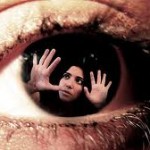Anxiety Disorder Symptoms of a Silent Thief

 This brief message introduces a series about Anxiety Disorder. Stay tuned for a more personal experience.
This brief message introduces a series about Anxiety Disorder. Stay tuned for a more personal experience.
Everyone experiences stress and anxiety at one time or another in life. The difference between them is that stress is a response to a threat in a situation. Anxiety is a reaction to that stress.
Eustress refers to a positive response one has to a stressor, which can depend on one’s current feelings of control, desirability, location, and timing of the stressor. stress that is deemed healthful or giving one the feeling of fulfillment.
Distress: great pain, anxiety, or sorrow; acute physical or mental suffering; affliction; trouble. Mental or physical suffering or anguish.
Many people suffering from panic attacks don’t know they have a real and treatable disorder. A panic attack begins suddenly, and most often peaks within 10 - 20 minutes. Some symptoms may continue for an hour or more. A panic attack may be mistaken for a heart attack. Panic attacks may include anxiety about being in a situation where an escape may be difficult (such as being in a crowd or traveling in a car or bus). A person with panic disorder often lives in fear of another attack, and may be afraid to be alone or far from medical help
People with anxiety disorder have at least four of the following symptoms during an attack:
Chest pain or discomfort, dizziness or faintness, fear of dying, fear of losing control or impending doom, feeling of choking, feelings of detachment, feelings of unreality, nausea or upset stomach, numbness or tingling in the hands, feet, or face, heart palpitations, fast heart rate, or pounding heart, sensation of shortness of breath or smothering, sweating, chills, or hot flashes and trembling or shaking.
It’s a scary thing when the body will take over as the mind blocks things out!




Panic disorder sometimes runs in families, but no one knows for sure why some people have it while others don’t. Researchers have found that several parts of the brain are involved in fear and anxiety. By learning more about fear and anxiety in the brain, scientists may be able to create better treatments. Researchers are also looking for ways in which stress and environmental factors may play a role.-:”.
Catch ya later
<http://www.wellnessdigest.co